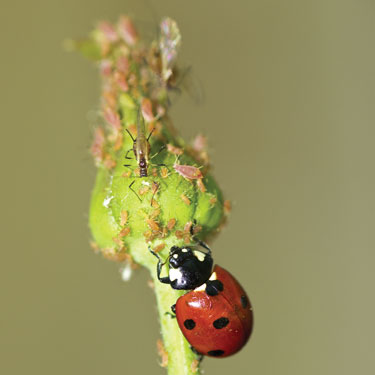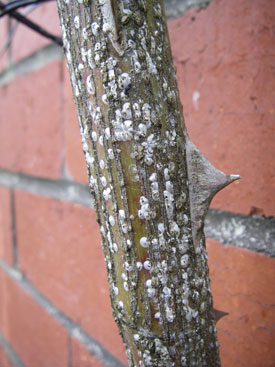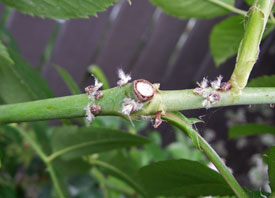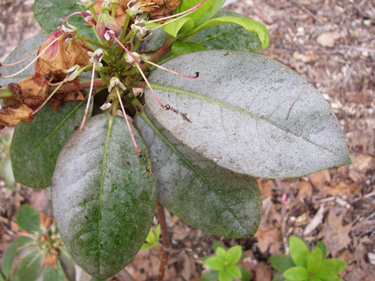Battling against bugs
Summer’s warm humid conditions are great for plants but also for their foes – both diseases and pests in all their forms.
Diseases most rampant from mid-Spring to Autumn are the black spots, rusts, moulds and mildews. They arrive unseen on the wind, their tiny spores settling on susceptible plants to sprout and multiply.
All my roses (that is all three of them) have black spot and rust and the plants look quite pathetic. Being in pots, they need constant watering and regular feeding to keep them even marginally healthy but the stresses of summer always means they succumb to these fungal maladies.
When it comes to dealing to fungal problems, prevention is always better than cure and I’m not convinced that “home remedies” such as sprays of milk, baking soda etc really do the trick. I’d much rather be sure of control with a proprietary spray from the garden centre.
Pests, or bugs as I prefer to call them, are a little more obvious - aphids that arrive as one or two winged adults and multiply overnight to an invasion; passionvine hoppers that hatch from minute eggs and make a nuisance of themselves as sticky fluffy bums; the seemingly benign lemon tree borer beetle that sits quietly on the windowsill but has probably spent the previous day drilling its eggs into the lemon tree, for its offspring to later hatch and tunnel through the trunk; and the bronze beetle that attacks at night and is gone by day, leaving a trail of holes in the leaves of precious plants. Then there’s caterpillars, scale insects, mealy bugs, thrips, psyllids, vege bugs, and mites – an army of bugs devouring the garden – it’s a wonder there is anything left!
Thankfully there always is and our gardens are helped not only by the capacity plants have for fighting against adversity but also by our own husbandry (gardening!) and the large number of beneficial bugs that exist to prey on the pests.
However if you find yourself overwhelmed by a blight or a barrage of bugs, the best defence may be the chemical kind.
These days the range and use of chemicals for both home gardeners and commercial growers is restricted to prevent harm to the user and the environment so I’m confident of using anything off the shelf whilst following the printed directions. And you can find products that control a range of bugs and diseases so you may only need to purchase two or three products. Ask the garden centre staff for advice.
Some basic rules of spraying are:
- Follow the directions on the container!
- Always protect yourself by wearing gloves, long sleeves and trousers and a mask. I also like to wear goggles or glasses and a cap.
- Spray in the evening when the best bugs have gone home eg bees and other pollinators.
- Do not spray if it is windy – the spray won’t reach the target and may well annoy your neighbours.
- Don’t mix more than you need or at a rate stronger than is stated – you’re just wasting spray and may cause harm to your plants.
- Wash your hands, face and any exposed skin well afterwards with soap and lots of cold water.
Chemical sprays will control pests far more effectively than any amount of manual control and who wants squashed aphids on their fingers anyway!
28-Jan-2016

Aphids on a rose bud being attacked by a ladybird

Scale insect on a rose stem

Passionvine hopper nymphs or "Fluffy Bums"

Holes left by Bronze Beetle on azalea

The silvering caused by Thrips on rhododendron leaves


